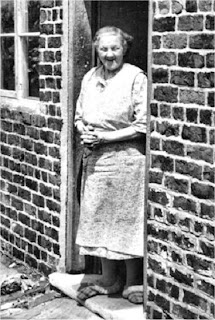We’re just about getting used to the huge variety of work here at The Blackden Trust. It’s a real eye-opener of how much goes into running the Trust, and it’s become our weekly highlight.
Over the last few weeks we’ve been market researching everything from rare books to creative writing lessons, and prices for future courses, trying our hand at blogging, drinking a lot of hot chocolate and helping to create something very exciting: the Goostrey Parish Archive.
Goostrey is a village with a long and fascinating history, but that history’s survival depends on local people. So, a group of volunteers (including us) are aiming to create an archive of documents, photographs, oral history and any other kinds of artefacts from local people, so that we can make Goostrey’s history available to the public. This is great news and we can’t wait to get started, especially because we’ve already seen a glimpse of the wonderful things that there are in the village...
... like this brilliant, but faded, photograph of St Luke’s Church, taken in the late nineteenth century.
And this engraving made before the graveyard was extended in about 1860.
Bethan and Phil












































